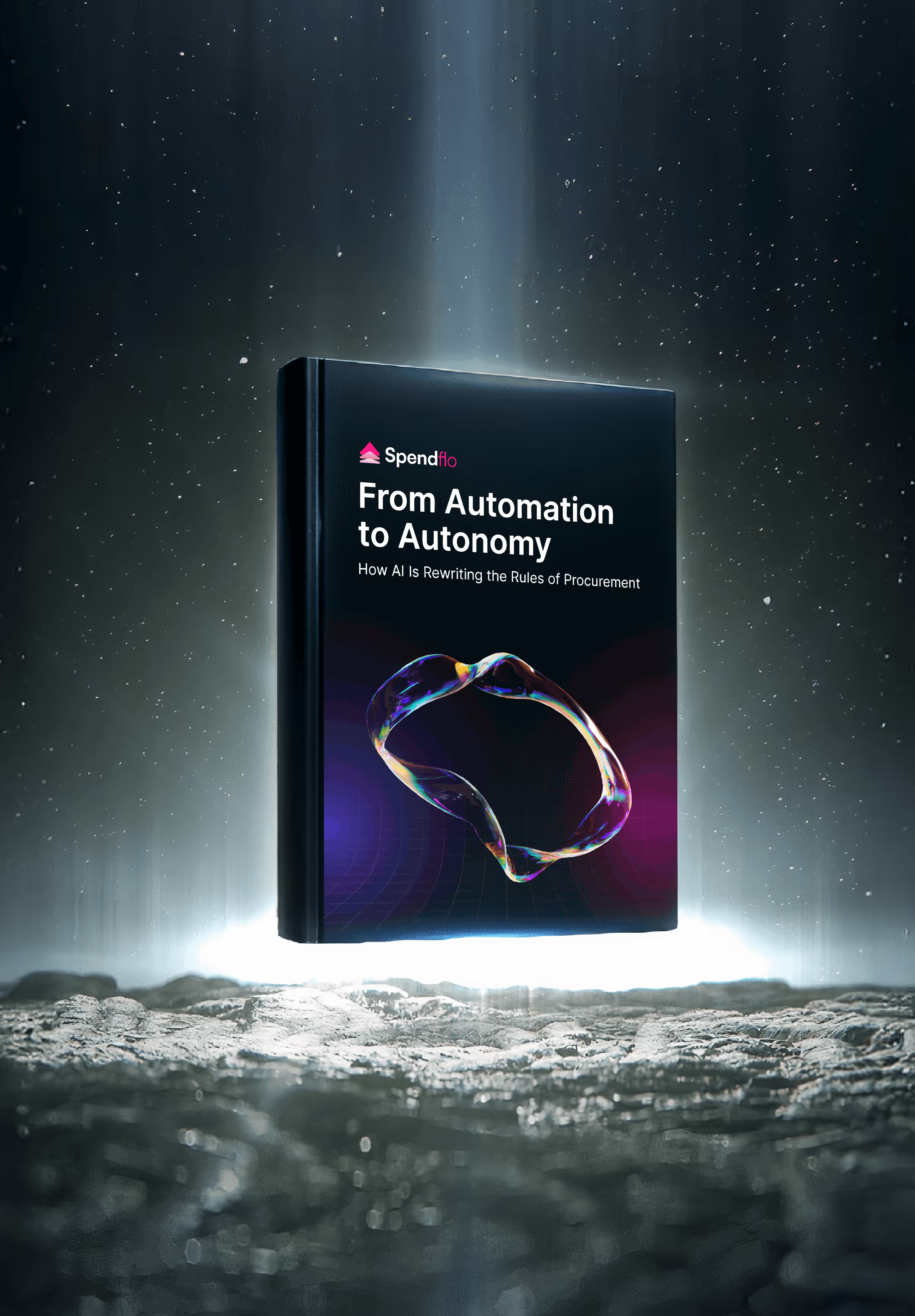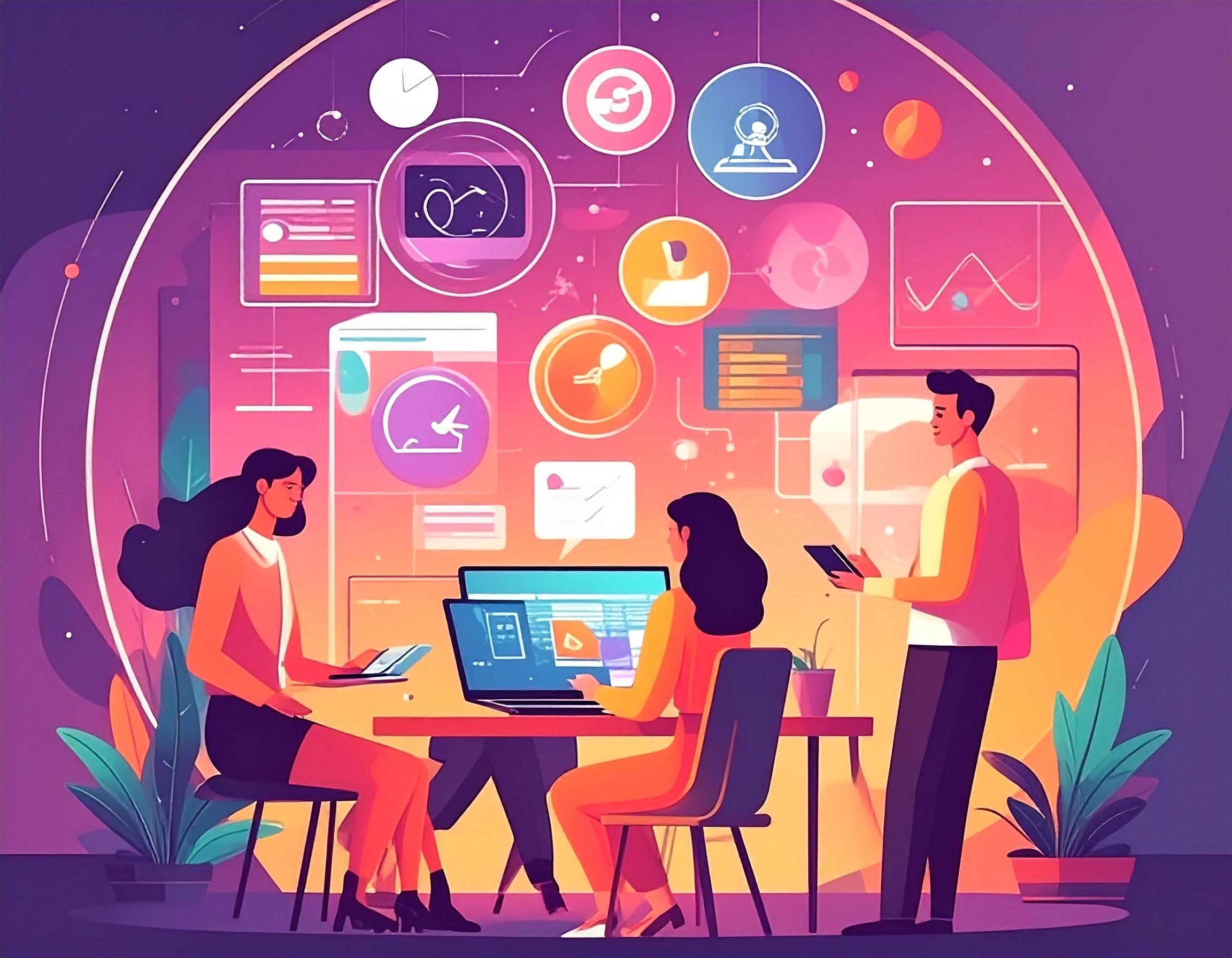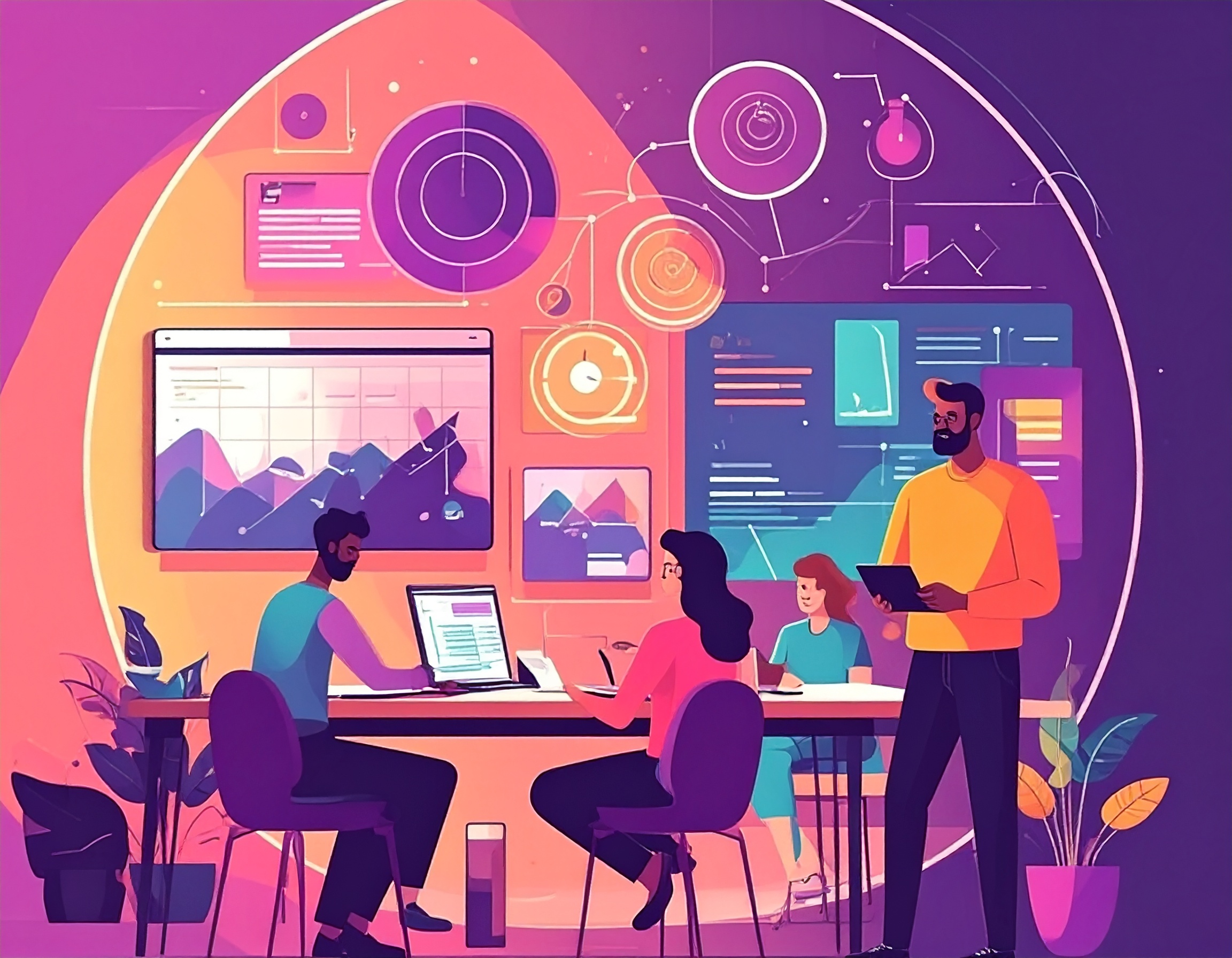

AI in Procurement Orchestration: Transforming Supply Chain Management

AI in Procurement Orchestration: Transforming Supply Chain Management
Learn how AI is revolutionizing procurement orchestration. Explore its key capabilities, real-world applications, and future trends in AI-driven supply chains.


AI is quickly becoming a game-changer in modern procurement.
From automating manual workflows to predicting supplier risks, it's redefining how businesses manage their supply chains.
Procurement teams today are under pressure to cut costs, boost efficiency, and stay agile - all while dealing with growing complexity. AI helps simplify that challenge by orchestrating tasks, analyzing data, and supporting better decisions across the board.
In this blog, we will:
- Define AI in procurement orchestration and its significance
- Explore why it's becoming essential for modern businesses
- Break down the capabilities AI brings to procurement workflows
- Look at real-world examples of AI-driven procurement in action
- Discuss challenges, risks, and future trends
- Show how Spendflo supports AI-enabled procurement orchestration
What is AI in Procurement Orchestration?
AI in procurement orchestration uses artificial intelligence to automate, optimize, and coordinate procurement processes across the supply chain. It enables smarter sourcing, faster approvals, real-time insights, and better supplier decisions across the entire procure-to-pay lifecycle.
Why AI in Procurement Orchestration is Important
AI in procurement orchestration is important because it brings speed, accuracy, and intelligence to an area often slowed by manual processes. It helps businesses make better decisions, reduce waste, and stay ahead in a competitive market.
Here’s why AI matters more than ever in procurement orchestration:

Improves Decision-Making Accuracy
AI reviews massive volumes of procurement data - past purchases, supplier performance, and market trends - to provide clear recommendations. It reduces human bias and ensures decisions are backed by real-time facts. This leads to more consistent sourcing strategies and fewer costly errors.
Increases Operational Efficiency
Procurement teams often deal with repetitive tasks like approvals, vendor comparisons, and invoice checks. AI handles these processes quickly and with fewer errors. Teams can focus on high-value work, improving overall productivity without needing more resources.
Reduces Costs and Prevents Overspending
AI helps identify duplicate purchases, non-compliant spending, and underutilized tools. By analyzing patterns, it highlights areas where spending can be optimized. This enables companies to cut waste, make better use of budgets, and plan more effectively.
Enhances Supplier Relationship Management
Strong supplier relationships are key to supply chain stability. AI provides insights into performance, delivery timelines, and potential risks. With this information, businesses can address challenges early and collaborate better with vendors for long-term value.
Enables Strategic Sourcing and Planning
AI can simulate sourcing outcomes, compare vendor offers, and suggest ideal procurement paths.
This helps businesses stay agile and choose partners based on total value - not just price. It also improves resilience by preparing for supplier or market disruptions.
Drives Compliance and Risk Mitigation
With evolving regulations and complex vendor contracts, staying compliant is harder than ever. AI scans for anomalies, contract mismatches, and risky vendor behavior. It ensures businesses are aligned with internal policies , contract mismatches, and risky vendor behavior. It ensures businesses are aligned with internal policies.
By improving accuracy, efficiency, cost control, and supplier collaboration, AI empowers procurement teams to work smarter, not harder. Businesses that embrace these capabilities early will be better equipped to navigate complexity, drive savings, and unlock long-term strategic value.
How AI Enhances Procurement Orchestration: Key Capabilities
AI enhances procurement orchestration by introducing automation, intelligence, and agility into every part of the workflow. It replaces manual tasks with smart systems, enabling teams to make faster and more strategic decisions.
Here are the key capabilities AI brings to procurement orchestration:

Intelligent Spend Analysis and Forecasting
AI can analyze vast volumes of historical and real-time spend data to uncover hidden savings, categorize expenses, and flag inefficiencies. Procurement teams get granular insights into where money is going and why. With forecasting features, AI helps anticipate future needs, making budgeting more accurate and responsive.
AI-Powered Supplier Matching and Evaluation
AI evaluates multiple data points - like vendor reliability, compliance records, pricing trends, and service levels - to recommend the most suitable suppliers. It eliminates guesswork and ensures that vendor decisions are based on performance and risk indicators, not just cost.
Automated Approval and Workflow Management
Manual approval chains slow down procurement cycles and introduce errors. AI automates approvals based on pre-set conditions like purchase value, department, or urgency. It helps speed up requisitions, ensures policy compliance, and reduces delays across teams.
Contract Analysis and Risk Scanning
AI can read and interpret thousands of contracts in minutes. It identifies risks like unfavorable terms, renewal traps, or missing clauses, and can even compare contract versions. This helps legal and procurement teams reduce exposure and negotiate smarter deals.
Demand Prediction and Inventory Optimization
AI uses internal and external data to forecast demand - factoring in seasonality, market trends, and past usage. It ensures that companies have leaner inventory and fewer shortages. This results in leaner inventory, fewer rush orders, and better alignment with actual needs.
Real-Time Alerts and Anomaly Detection
AI constantly scans for deviations in spend, pricing, or process flow—flagging issues like duplicate invoices, off-contract purchases, or policy breaches. These alerts allow for faster interventions, reducing financial leakage and maintaining compliance.
Dynamic Pricing Insights and Negotiation Support
AI tools benchmark vendor pricing against market standards, alerting teams when costs are unusually high. It also suggests negotiation levers like volume discounts, contract bundling, or alternative vendors - helping teams secure the best possible terms.
End-to-End Visibility Across the Procurement Lifecycle
AI integrates data from sourcing to payment, offering a 360-degree view of procurement activities. Teams can track supplier performance, contract milestones, and budget impact in one place. This unified view enhances planning, compliance, and strategic decision-making.
With these capabilities, AI empowers procurement teams to shift from operational firefighting to strategic orchestration - reducing risk, driving value, and improving outcomes at every step.
Real-World Applications of AI in Procurement
AI is already being used across procurement functions to streamline operations, improve decisions, and unlock cost savings. These real-world use cases show how AI is moving from concept to competitive advantage.
Here’s how organizations are applying AI across their procurement lifecycle:

AI in Supplier Selection and Vetting
AI helps evaluate suppliers beyond just cost - by analyzing delivery performance, compliance history, financial health, and customer reviews. It shortlists the most reliable vendors and flags risky ones automatically. This results in better sourcing decisions and stronger supplier relationships.
Automating Purchase Requests and Orders
AI-powered tools convert purchase requisitions into orders with minimal human input. Based on usage trends and approval history, it can even auto-fill fields and suggest preferred vendors. This reduces turnaround times and cuts down on procurement errors.
Predictive Risk Scoring for Vendors
AI models assign real-time risk scores to suppliers using a mix of internal and third-party data. This includes financial indicators, regulatory updates, geopolitical risks, and even ESG performance. Procurement teams can proactively mitigate disruptions and avoid high-risk vendors.
Smart Contract Negotiation and Management
AI tools analyze contract language, compare clauses, and identify opportunities for better terms. They help procurement teams detect renewal traps, flag missing SLAs, and benchmark clauses against industry standards. This speeds up negotiations and ensures airtight contracts.
Fraud Detection in Procurement Activities
AI systems monitor patterns across procurement transactions to detect anomalies - like duplicate invoices, unapproved vendors, or inflated purchase amounts. When flagged early, these insights prevent revenue leakage and strengthen compliance.
AI in Sustainable and Ethical Sourcing
AI helps organizations align procurement with ESG goals by scoring suppliers on environmental impact, labor practices, and governance standards. It automates supplier due diligence and ensures sourcing meets ethical requirements.
AI in procurement isn’t futuristic - it’s happening now. Businesses using AI are already seeing faster cycles, fewer errors, smarter negotiations, and stronger vendor partnerships.
Challenges and Considerations in AI Adoption
While AI offers powerful advantages, implementing it in procurement orchestration comes with its own set of challenges. These range from technical hurdles to organizational readiness and ethical concerns.
Below are some of the key considerations and obstacles businesses face when adopting AI in procurement:
Data Quality and Integration Issues
AI is only as effective as the data it receives. Many procurement teams struggle with fragmented, outdated, or inconsistent data spread across different systems. Without clean and connected data, AI tools can produce inaccurate insights, limiting their usefulness.
Change Management and Team Training
Introducing AI changes workflows - and that often leads to resistance. Procurement teams need proper training and support to trust and adopt AI tools. Without buy-in, adoption slows down, and the benefits of AI are left unrealized.
Lack of Procurement-AI Alignment
Sometimes AI tools are deployed without a clear understanding of procurement goals. This misalignment can result in solutions that don’t solve actual problems. A successful implementation requires collaboration between procurement leaders, IT teams, and AI vendors from the start.
Vendor and Tool Selection Complexity
With dozens of AI procurement tools available, selecting the right one can be overwhelming. Some may offer great features but lack integration, while others may not scale well. Businesses need a clear roadmap to evaluate vendors based on long-term needs.
Governance, Compliance, and Bias Concerns
AI decisions must be explainable, auditable, and fair. In procurement, this means ensuring that AI doesn’t introduce vendor bias or violate compliance rules. Companies must implement oversight mechanisms to monitor AI behavior and ensure accountability.
Budget Constraints and ROI Uncertainty
AI investments often require upfront costs for technology, integration, and training. For some teams, the benefits might not be immediately visible. Leadership needs to clearly define success metrics and track ROI to justify continued investment in AI.
Despite these challenges, the long-term value of AI in procurement orchestration is undeniable. With the right strategy, support, and tools in place, businesses can overcome roadblocks and fully unlock AI’s potential.
Future Trends in AI-Driven Procurement Orchestration
AI in procurement is evolving fast, and the next wave of innovation promises even greater speed, autonomy, and intelligence. From predictive systems to autonomous agents, these trends are set to redefine how procurement teams operate.
Here are the top future trends shaping AI-powered procurement orchestration:
Rise of Autonomous Procurement Agents
AI agents are moving beyond task support to full autonomy. These bots will soon be able to initiate and complete procurement cycles - identifying needs, shortlisting vendors, negotiating terms, and executing purchases with minimal human intervention. This will drastically reduce procurement lead times and human error.
Predictive Procurement with AI and IoT
Integrating AI with IoT will allow procurement systems to respond in real time to supply chain shifts. For instance, a connected factory could trigger automatic reorders based on sensor data. This predictive approach helps businesses stay ahead of demand and avoid disruptions.
AI-Powered Market Intelligence Platforms
AI will enable procurement platforms to monitor global markets, supplier news, pricing trends, and risk indicators in real time. This empowers teams to anticipate price fluctuations, supplier changes, or geopolitical issues before they affect operations.
Hyper-Personalization of Supplier Engagement
AI will analyze vendor behavior, performance, and preferences to tailor engagement strategies. Just like personalized marketing, procurement will soon offer targeted incentives, communication styles, and contract terms based on vendor profiles - making relationships more strategic and effective.
Integrated AI-ERP Procurement Solutions
The future of procurement lies in seamless integration. AI-powered procurement will become part of larger ERP ecosystems, enabling smooth data flow across finance, operations, and inventory. This alignment will improve cross-functional collaboration and real-time decision-making.
Generative AI for Procurement Documentation
Generative AI will assist in drafting RFPs, contracts, negotiation emails, and performance reports. Instead of writing from scratch, teams can use AI-generated drafts that are accurate, compliant, and context-aware - saving hours of manual effort and reducing legal risk.
AI in procurement is heading toward more automation, intelligence, and strategic value. Businesses that invest in these innovations early will lead the next era of agile and insight-driven supply chains.
How Spendflo Helps with AI in Procurement Orchestration
Spendflo makes AI-powered procurement orchestration simple, scalable, and impactful. Our platform blends automation with real-time insights to help finance and procurement teams streamline workflows, reduce costs, and gain control over their software and vendor ecosystem.
Here’s how Spendflo supports AI-driven procurement:
Centralized Spend Intelligence and Insights: Spendflo gives businesses a unified view of all SaaS and vendor spend. With built-in analytics and AI-driven recommendations, teams can track usage, identify waste, and take action—without relying on scattered spreadsheets or guesswork.
Embedded AI in Vendor Negotiation Workflows: Spendflo’s AI tools assist in identifying negotiation levers, benchmarking vendor pricing, and timing renewals. This empowers teams to secure better terms, reduce contract bloat, and ensure every dollar spent delivers maximum value.
Proactive Renewal Management Using Predictive AI: Never miss a renewal deadline again. Spendflo uses AI to forecast renewal timelines, flag potential risks, and recommend consolidation opportunities - so teams can stay ahead and negotiate from a position of strength.
Tailored Automation for Procurement Efficiency: Whether it’s automating approval workflows or managing contract lifecycles, Spendflo integrates AI into every step of the procurement process. This reduces manual work, accelerates purchasing, and ensures compliance with procurement policies.
With Spendflo, companies gain not just cost savings but a strategic advantage - turning procurement into a proactive, AI-enabled engine for growth.
Frequently Asked Questions on AI in Procurement Orchestration
What are the benefits of using AI in procurement orchestration?
AI brings speed, accuracy, and strategic insights to procurement. It reduces manual tasks, optimizes supplier decisions, and improves spend visibility. Over time, this results in cost savings, stronger compliance, and more agile supply chain operations.
How is AI changing procurement workflows?
AI transforms procurement by automating approvals, predicting demand, and analyzing vendor performance in real time. Workflows become faster, more consistent, and less error-prone. This allows teams to shift their focus from operations to strategic planning.
Can AI fully automate the procurement process?
AI can automate many procurement tasks - like approvals, risk checks, and supplier evaluations - but full automation still needs human oversight. Strategic decisions, relationship management, and exceptions often require human judgment alongside AI support.
What industries benefit most from AI-led procurement?
Industries with complex supply chains - like manufacturing, healthcare, technology, and retail - see the most value from AI in procurement. However, any business with significant vendor spend can benefit from better forecasting, negotiation, and process automation.
How can businesses start implementing AI in procurement?
Start by identifying manual bottlenecks and high-spend areas. Choose AI tools that integrate with existing procurement systems and provide measurable ROI. It's also important to train teams, align stakeholders, and set clear goals for adoption.
What challenges should companies expect when adopting AI?
Common challenges include poor data quality, lack of team training, unclear ROI, and choosing the wrong tools. Businesses need a thoughtful strategy, cross-functional collaboration, and ongoing monitoring to ensure AI delivers its full potential.










.png)




.png)










.avif)


